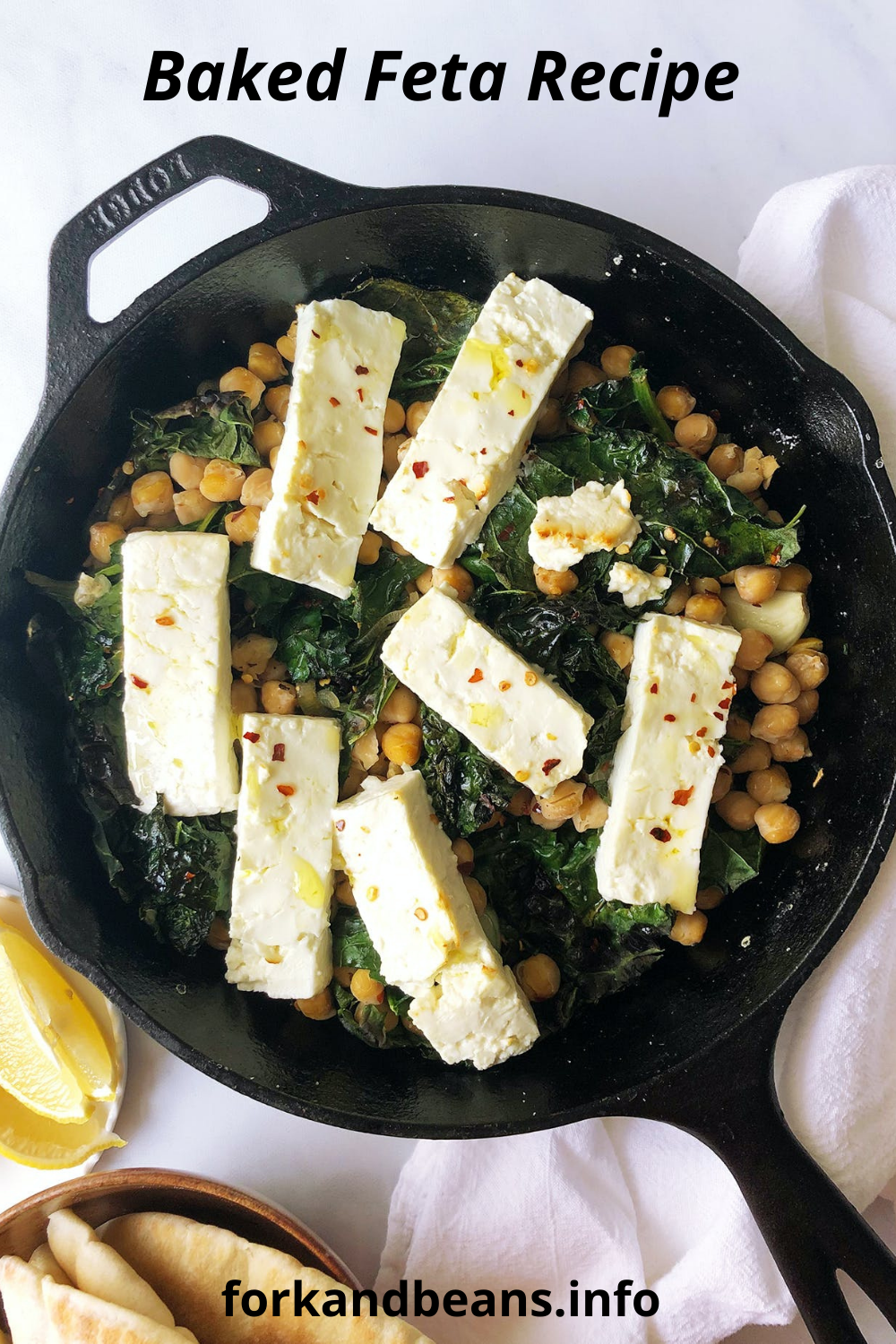
Baked Feta with Garlicky Kale and Chickpeas
Baked Feta with Garlicky Kale and Chickpeas
Cheese for dinner? Don’t mind if we do. This recipe for baked feta might sound more like an appetizer than a main course (and you could certainly serve it as such), but the addition of tender, sautéed kale and chickpeas makes it hearty enough to be the star of the table.
And because the best dinners are the ones you can customize, feel free to adjust ingredients as you please. The kale can be swapped with any hearty green (like mustard greens or chard), the shallot can be replaced with onion and the feta can—actually, don’t skip the feta.
RELATED: BAKED FETA WITH DILL, CAPER BERRIES AND CITRUS
INGREDIENTS
Extra-virgin olive oil, as needed
1 medium shallot, sliced
2 bunches kale or other hearty greens, ribs and stems removed
3 garlic cloves, peeled and smashed
½ to 1 teaspoon crushed red pepper flakes
Kosher salt and freshly ground black pepper
One 15-ounce can chickpeas, drained and rinsed
One 10- to 12-ounce block feta cheese, cut into ½-inch slabs
Juice of one lemon
Pita, for serving
DIRECTIONS
1. Preheat the oven to 350°F. In a medium skillet, heat a few tablespoons of olive oil over medium heat. Add the shallot and sauté until tender and translucent, about 5 minutes.
2. Working in batches if necessary, add the kale to the skillet. Season with salt and pepper, and cook until it begins to soften and wilt down, 6 to 8 minutes. Add the garlic and crushed red pepper flakes, followed by the chickpeas. Arrange the slices of feta on top.
3. Transfer the skillet to the oven and bake until the cheese is soft and melty, 10 to 15 minutes. (At this point, you can transfer to the broiler to brown the cheese, if desired.) Drizzle with lemon juice and serve with pita slices.
NUTRITION
458 calories
26g fat
40g carbs
21g protein
11g sugars
Sunflower oil, olive, palm, coconut, flaxseed, pumpkin seed, beet, almond, avocado, pistachio oil… No vegetable oil contains cholesterol and all contain vitamin E.
As the name suggests, this oil is made from olives, by squeezing whole fruits. Depending on the quality of the olives and the way they are squeezed, there are different types of olive oil.
It is most often used in food, and it is not uncommon to use it in cosmetics and pharmacy, and as a fuel for traditional lamps.
In the diet it is best to consume without any processing, to use all the components. It is not recommended for frying give a high boiling point which releases harmful free radicals. It is also not recommended for preparing cakes and pastries due to the strong smell, and it can completely change the taste. However, it is a great choice for any other food preparation.
Contains vitamins E, D, A and K, unsaturated and saturated fatty acids, the most important of which is Omega-3.
B vitamins, on the other hand, have a positive effect on the nervous system and convert carbohydrates and proteins into bodily energy. They are important for hair and eye care, improve the work of the stomach and intestines, maintain body weight and help create red blood cells.
Omega-3 fatty acids protect the cardiovascular system and help reduce the risk of depression, dementia and arthritis.
It is said to be a source of health because it reduces pain (has similar anti-inflammatory properties to ibuprofen) and reduces the risk of cancer and is used in alternative medicine.
Lemon peel is very useful, because it is rich in vitamin P and phytocidal substances, which kill microbes. The bark also contains essential oils that are useful for: normalizing blood pressure, lowering cholesterol levels, preventing atherosclerosis, strengthening the immune system, headache, nausea, exhaustion, improving memory and concentration.
Lemon is a medicine for the stomach due to its laxative effect. It also strengthens the immune system. If you have a cold, try drinking lemon juice. In addition to helping you fight the common cold, it will also stop the development of infections. This is because of its antibacterial and antiviral properties.
It is very simple to prepare lemon water. All you have to do is mix the pulp and juice of half a lemon in warm water and drink it. Lemon water will help your body a lot.
Lemon water improves the body’s ability to expel toxins.
It acts as a “cleanser” of the blood and improves the body’s ability to expel toxins. Your skin may not look healthy if your body is full of toxins. When it gets rid of toxins, it will first affect your skin. It will look clean and without acne.
Helps with problems with the digestive system – nausea, heartburn, constipation and parasites, as well as digestion.
Lemon water is a diuretic. This means that it is very useful for people who have urinary tract infections. It also helps people with arthritis or rheumatism, as it clears toxins and bacteria.
Lemon juice mixed with water can be very useful for pregnant women, as it helps build the bones of the unborn child. The calcium in lemon is great for bones and teeth. Lemon also contains potassium, which is good for the brain and nerve cells.

This is my Website with a ocer 10000+recipes of Healthy Foods, Nutrition, Vegan Salad,Vegan Pizza, Keto Food, Diabetes Recipes.







